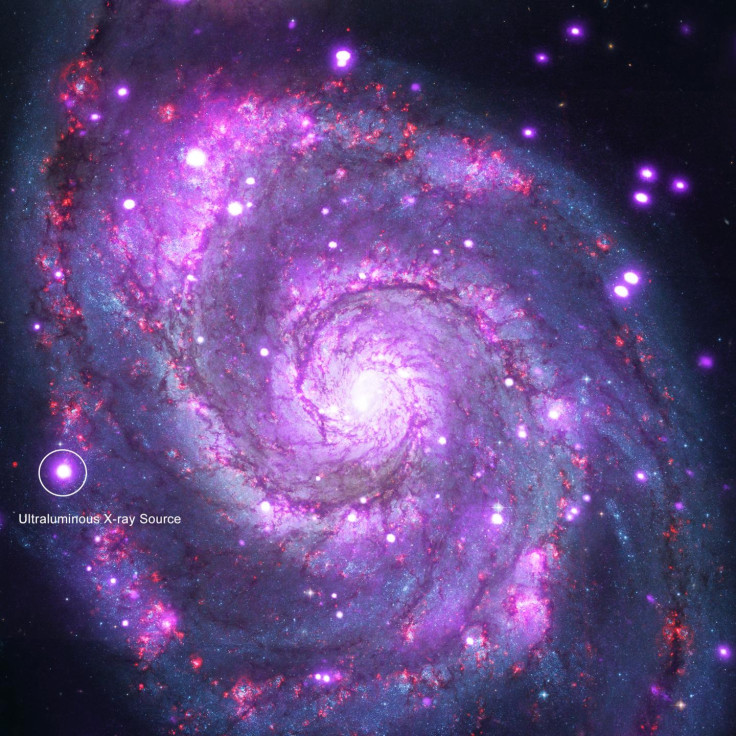What makes neutron stars shine so bright? A star 28 million light years away provides new clues
Neutron stars are highly dense objects – a mere teaspoon of which would weigh around a billion tons.

Intensely bright sources of X-rays in the outer edges of galaxies were first detected by astronomers in the 1980s. These cosmic objects are called ultraluminous X-ray sources (ULXs) and some of them can glow as bright as a million suns combined. Although scientists first thought these cosmic objects were black holes, more recent research revealed they are actually neutron stars.
Neutron stars are highly dense objects – the burnt-out core of giant stars that have exploded. A mere teaspoon of a neutron star would weigh around a billion tons.
Until recently, three ULXs had been identified. Now, scientists at Caltech have identified a fourth such ULX as a neutron star, which is located 28 million light years away, using data from Nasa's Chandra X-ray Observatory.
The researchers have also found new clues about what makes these cosmic objects glow so intensely bright. According to the study, the gravity of a neutron star draws material from its surrounding stars, which in turn makes the neutron star heat up and glow brightly. However, there comes a point in the neutron star's 'feeding' process when its X-rays start pushing away matter. This point is called the Eddington Limit – when the neutron star cannot amass matter any faster and emit any more X-rays.
"In the same manner in which we can only eat so much food at a time, there are limits to how fast neutron stars can accrete matter," Murray Brightman, a postdoctoral scholar at Caltech and lead author of the new study, said in a statement. "But ULXs are somehow breaking this limit to give off such incredibly bright X-rays, and we don't know why."
The scientists observed the new ULX in the Whirpool galaxy and using X-ray data taken by Chandra, found that the ULX's light spectrum had an unexpected dip. The scientists concluded that the dip resulted from a phenomenon called cyclotron resonance scattering.
Tell-tale signatures in a star's spectrum of light are created by cyclotron resonance scattering. These signatures or patterns, called cyclotron lines, provide information about the strength of the star's magnetic field.
The unexpected dip in the ULX's light spectrum occurs when charged particles, such as positively charged protons or negatively charged electrons, orbit a magnetic field. Since black holes do not have a magnetic field but neutron stars do, the findings led to the conclusion that the ULX in the Whirlpool galaxy was a neutron star.
"If the cyclotron line is from protons, then we would know that these magnetic fields around the neutron star are extremely strong and may, in fact, be helping to break the Eddington Limit," said Brightman.
These strong magnetic fields can allow neutron stars to feed on more matter than usual and shine extremely brightly.
"The discovery that these very bright objects, long thought to be black holes with masses up to 1,000 times that of the Sun, are powered by much less massive neutron stars, is a huge scientific surprise," said Fiona Harrison, the principal investigator of Nasa's NuSTAR mission, who also serves as a professor of physics at Caltech and is the Kent and Joyce Kresa Leadership Chair of the Division of Physics, Mathematics and Astronomy at the university. "Now we might actually be getting firm physical clues as to how these small objects can be so mighty."
The researchers hope to gather more data on the ULX in the Whirlpool galaxy, also known as M51, and hunt for more cyclotron lines in other ULXs, in efforts to further uncover the mystery of how neutron stars break the Eddington Limit to shine so bright.
The findings of the new research have been published in the journal Nature Astronomy.






















